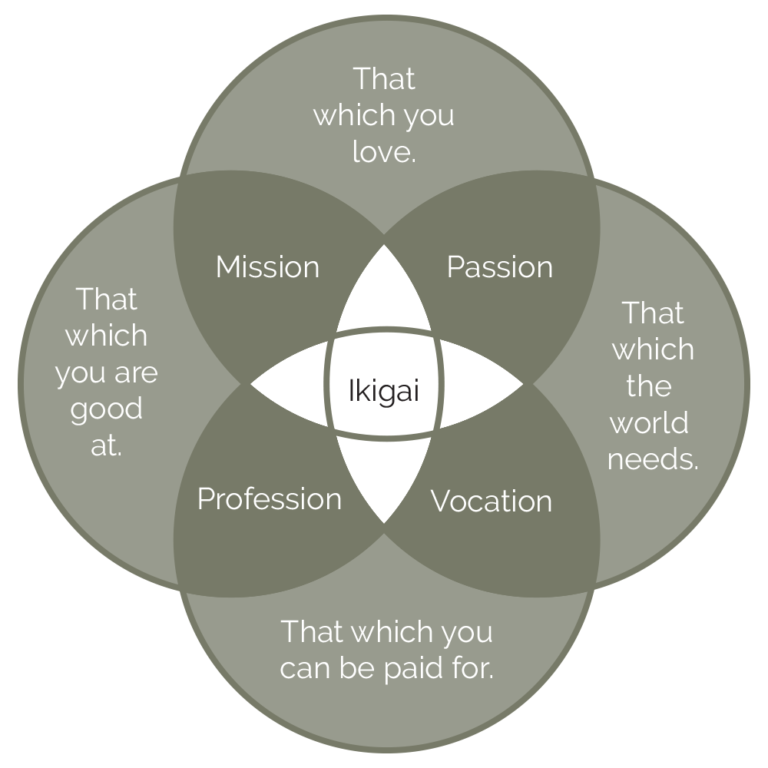Toolkit
Impact
Impact Mapping
What
Impact mapping explores the intersection of purpose, core competencies and the needs of the world. By isolating the overlap of all three, a company’s zone of impact is defined.
If purpose is the internal intentional side of an organization’s reason for being, it’s metabolization and expression of its purpose in the world is its impact. The overlapping arenas of purpose, competency and what the world needs is like the Japanese “ikigai”–or “reason to be” applied in a corporate context.

To map impact accurately, you need a cross-functional representation of all of these areas.
- HR sets the pace with the interiors of individuals—their unique purpose—as well as the culture of the company at large, with its purpose, mission, vision, values and goals.
- This higher purpose is translated through strategy (what) and operations (how) to deliver impact both internally and externally.
- For a company interested in impact, the invitation is to play a bigger game and take a longer view. Conscious Capitalism considers this a “stakeholder orientation”—I shorten it to impact. Because looking out to include not only immediate customers but to the community and the larger world is part of the equation, CSR and Community Relations and similar departments should be involved in the process.
Why
- Purpose without its expression in the world is vaccus, uninspiring and ineffective.
- A company that lives its values, “walks its purpose talk”, is inspiring and tends to be more successful in the marketplace looking at employee engagement, productivity and retention, company profitability, market share and more.
How
Set up. Bring together leaders responsible for the following areas, if they exist:
- Corporate Social Responsibility, Philanthropy, Sustainability and Community Relations as well as someone from HR and 1 or 2 key Executives involved in Strategy or Operations. Create a semi-circle around a flip-chart or white board where all the 4 elements of the Ikigai model can be explored: Passion, Mission, Vocation and Profession and their associated questions:
- What do we love?
- What are we good at?
- What does the world need?
- And what can we make money at?
Facilitator introduces the way to participate. All thought questions are asked of the company itself, the collective, as if it were a sentient being, e.g.
- HR—what do we love?
- Operations—what are we good at?
- CSR/Sustainability/Community Relations—what does the world need?
- Strategy—what can we make money at?
Facilitator invites everyone to get quiet, perhaps close their eyes and drop in and reflect on the company and the environment in which it operates.
Each functional representative begins a fresh page on the flip chart or section on the white board, soliciting input and recording responses.
Facilitator ensures all perspectives are valued equally and representatives from each of the 4 identified areas–HR, Strategy, Operations, CSR/Sustainability/Community Relations.
Once all the input has been taken in, the functional representatives tied to each question summarize and synthesize the responses and feed them back to the group as actionable 3, 6, 9 or 12 month goals for voting.
Once the voting for each of the paths has been completed, the winners are input into the Ikigai framework and serve as the backbone for the impact plan for the next reasonable span of time, depending on your company and industry. (3,6,9,12 months or more).

Attributions
Discovering Your Divine Dharma, by Cortney Love, PhD in Purpose Rising: A Global Movement of Transformation and Meaning, Bright Alliance, 2017.
 by Montaia
by Montaia